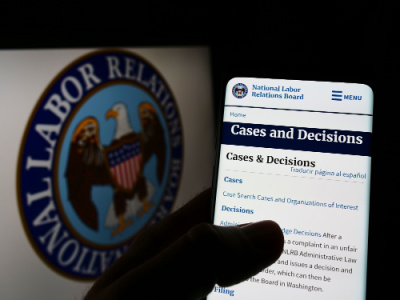The National Labor Relations Board (NLRB) adopted a new standard for evaluating joint employers that takes effect February 26, 2024. The rule greatly expands when two or more entities may be considered joint entities. As a result, certain employers will now be mandated to participate in collective bargaining and can be found liable for unfair labor practices. This new standard will be particularly troublesome to franchisors and staffing agencies.
How Does the 2023 Standard Differ from the 2020 Standard?
The final rule rescinds and replaces the 2020 final rule that was published by the prior Board and which took effect on April 27, 2020.
The new standard considers the alleged joint employers’ authority to control essential terms and conditions of employment, whether or not such control is exercised and without regard to whether any such exercise of control is direct or indirect.
By contrast, the 2020 rule made it easier for employers to avoid a finding of joint-employer status because it set a higher threshold of “substantial direct and immediate control” over essential terms and conditions of employment.
Essential Terms and Conditions of Employment Under Final Rule
Under the final rule, essential terms and conditions of employment are defined as:
- Wages, benefits, and other compensation;
- Hours of work and scheduling;
- Assignment of duties to be performed;
- Supervision of the performance of duties;
- Work rules and directions governing the manner, means, and methods of the performance of duties and the grounds for discipline;
- Tenure of employment, including hiring and discharge; and
- Working conditions related to the safety and health of employees.
The joint-employer standard is implicated only if an entity employs the workers at issue and has authority to control at least one of the terms or conditions. Authority over other matters outside of these seven isn’t sufficient.
Reserved and Indirect Control
Reserved control means an alleged joint employer maintains authority to control essential terms and conditions of employment but has not yet exercised such control. Section 2(2) of the National Labor Relations Act (NLRA) defines “employer” to include “any person acting as an agent of an employer, directly or indirectly.” Accordingly, the final rule accounts for control exercised through an intermediary or controlled third parties.
Reserved and indirect control can be far-reaching and can create uncertainty for employers about what authority or action may create reserved or indirect control to trigger joint-employer status.
What Does a Joint Employer Have to Bargain Over?
Once an entity is deemed a joint employer by virtue of its control over one or more essential terms and conditions of employment, it will be required to bargain over those particular essential terms and conditions as well as all other mandatory subjects of bargaining that it possesses or exercises the authority to control. It won’t be required to bargain over subjects it doesn’t have authority to control.
How Does This Compare to the DOL Rule?
The Board’s final rule is completely separate from the Department of Labor (DOL) rule. The Board and DOL independently set joint-employer standards, consistent with their different governing statutes.
The DOL applies an economic-realities test to interpret “employer” for the purposes of the Federal Labor Standards Act (FLSA). The Board doesn’t use the economic realities test.
Bottom Line
The nature of the business-to-business relationship is incidental to the analysis established by the NLRB’s final rule. Not all franchisors and their franchisees will be joint employers, nor will all staffing or temporary agencies and their client employers.
Rather, regardless of the business model, the joint-employer analysis is driven by the alleged joint employers’ relationship with the employees in question and their authority to control one or more of the essential terms and conditions of employment. While the final rule establishes a uniform joint-employer standard, the Board will still have to conduct a fact-specific analysis on a case-by-case basis to determine whether two or more employers meet the standard.
Because of the far-reaching nature of reserved and indirect control, you should review your agreements and revise them as necessary to avoid being found to be a joint employer wherever this is practical and possible.
Saul Glazer is a partner with Axley Brynelson, LLP, in Madison, Wisconsin. He can be reached at sglazer@axley.com.

